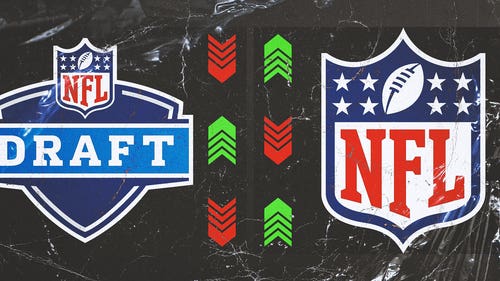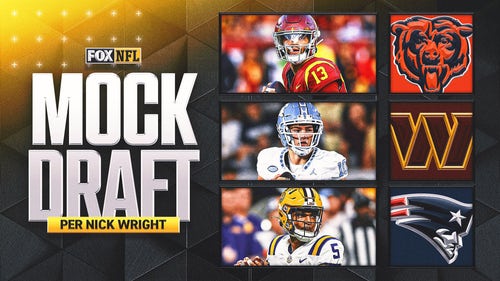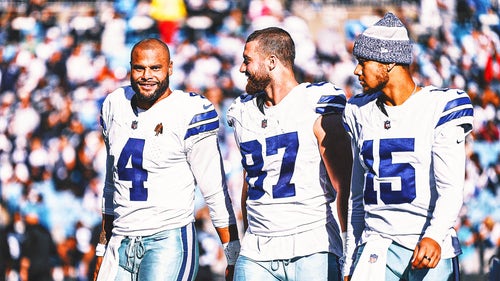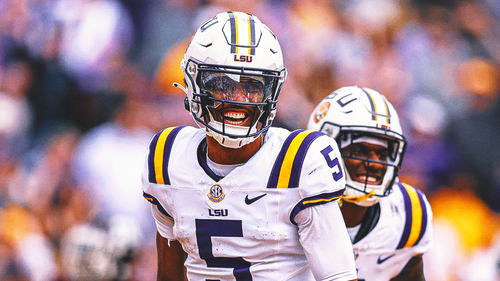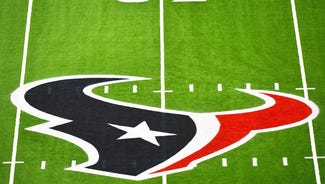
Heat control is big focus for NFL
The mercury hadn’t reached 80 degrees when Philadelphia Eagles defensive lineman Mike Patterson collapsed during drills Wednesday morning.
Tests conducted at the hospital reportedly point to the rare brain disorder arteriovenous malformation (AVM), a bundle of nerves that often requires surgery to treat and threatens Patterson’s football career. But in the immediate aftermath of Patterson’s fall to the turf and subsequent four-minute seizure, Eagles medical personnel didn’t rule out dehydration as a factor -- hardly a surprise since team officials were put on notice to keep an eye out on such ailments.
The NFL conducted two mandatory conference calls with team officials last week to discuss new health-and-safety guidelines. Much of the talk was to make teams aware of the temperatures and reminding coaches, general managers and team medical personnel about the warning signs of heat illness as the lockout came to an end and camps began to open, some to record-high temperatures.
"Everyone is just on a heightened state of awareness because teams haven't had any contact with these players for the last five months," said Doug Casa, chief operating officer of the Korey Stringer Institute, a nonprofit organization named after the late Minnesota Vikings lineman that aims to limit sudden deaths in sport. "Players are coming into camp in a wide range of shape. (The call) was just to remind them of all the key concepts, like rapidly cooling a player who is suspected to have heat illness and to go light the first three or four days before ramping things up."
Sometimes teams aren't waiting for players to adjust. Already, at least one player has been dismissed for being out of shape, as the Vikings cut offensive lineman Bryant McKinnie on Tuesday. Other coaches, like New York Giants coach Tom Coughlin, are altering practices with player safety in mind.
The Giants are frequently practicing at night to limit heat-related illnesses, and Coughlin is cognizant of trying to work the players in slowly. That also pertains to new free agents and players who have re-signed or reworked their contracts, all of whom are expected to begin practicing Thursday once the new CBA has been fully ratified.
"I took three days in shells and we're practicing at 6:05 (p.m.), which maximizes our meeting time," Coughlin told FOXSports.com Wednesday morning. "After the evening practice, they didn't have any more meetings so they had time for the cold tub and those things. We're going to probably put 14 guys on the field (Thursday) that we haven't had (on the field yet), so I'm very conscious of that."
The death of Stringer from heat stroke — Monday was the 10th anniversary — shook the NFL and brought the issue of heat ailments to the national arena. The league has continued to alter its guidelines with an eye on safety, and the NCAA developed similar rules in 2003, although other levels of football — especially at the high school level — have been slower to adapt.
There have been four heat-related deaths — including two Georgia teenagers Tuesday — because of heat-related illness in the past seven days, Casa said. A coach in Plano, Texas, also has died of heat stroke.
"This is the worst week we have ever known as far as high school football players are concerned, and most schools haven't even put on pads yet," Casa said.
There were 20 heat-related deaths from 2006-10 in football — more than double the previous five-year period, according to the National Center for Catastrophic Sports Injury at the University of North Carolina.
"It's very frustrating," said Dave Csillan, an athletic trainer at Ewing (N.J.) High. "It's just a matter of people being ignorant. You have to be aware of the temperature, provide water and sufficient rest periods. That's all you have to do to eliminate heat illness."
Csillan and Casa teamed in 2009 to write seven guidelines to help high school athletes acclimate to preseason activities. So far, only New Jersey has adopted the standards — they're backed by the National Athletic Trainers' Association — which include no contact until Day 6 and three-hour breaks in a cool place between two-a-day practices.
"A lot of it is that state associations don't want to hear negative feedback from coaches," Csillan said. "That's really what it comes down to. It shouldn't matter what the coaches want."
Frederick O. Mueller, director of National Center for Catastrophic Sport Injury Research, said part of the problem is that only about 40 percent of high school football teams have certified athletic trainers on site. Whether or not there's a trainer, Mueller said, parents should be asking coaches what precautions the teams take to counter heat illness, including the most basic, yet effective measure: a tub of ice in which a player can immerse his or her body and lower the core temperature quickly.
"The parents should make it their business to know," Mueller said. "You can't just send them out there and assume they are going to be fine."
Senior NFL writer Alex Marvez contributed to this report.








































































































































